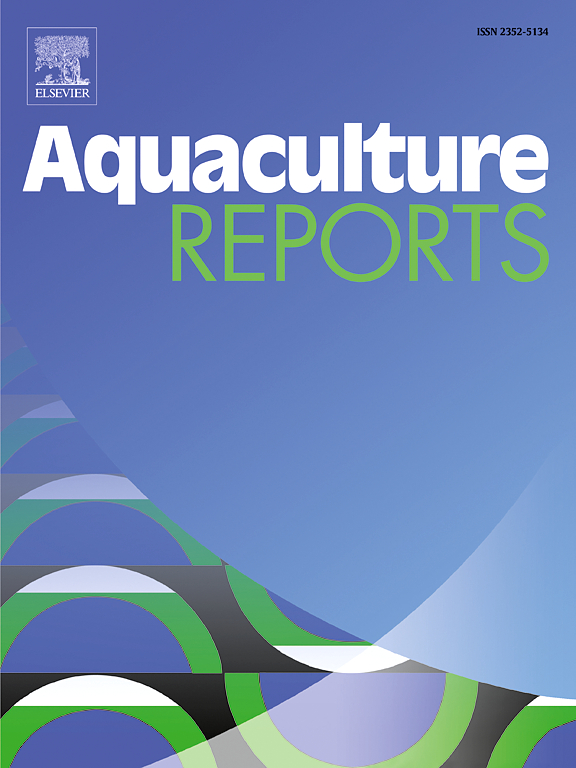Integrated metabolomics and proteomics analysis to provide insights into muscle atrophy of turbot Scophthalmus maximus by dietary Clostridium autoethanogenum protein
IF 3.2
2区 农林科学
Q1 FISHERIES
引用次数: 0
Abstract
Clostridium autoethanogenum protein (CAP) is a promising protein source for aquaculture. Previous studies proved that high levels of dietary CAP retarded the muscle development in turbot through mammalian target of rapamycin (mTOR)/amino acid response (AAR)/adenosine monophosphate-activated protein kinase (AMPK) pathways. However, how CAP regulating these pathways was still unclear and there was no information on the comprehensive analysis for the mechanisms of CAP on fish muscle. In the present study, the integration of metabolomic and proteomic was applied on the muscle of turbot (initial weight of 150 ± 3 g) fed with fishmeal-based diet or diet with 60 % of fishmeal protein replaced by CAP for 70 days. The present work confirmed that CAP decreased the growth, fillet yield and induced the muscle atrophy. Integrated analysis of metabolomics and proteomics showed that CAP negatively influenced the energy production by inhibiting the key enzymes of glycolysis and mitochondrial respiratory chain. Second, CAP inhibited mitogen-activated protein kinase (MAPK) and phosphatidylinositol-3-kinase (PI3K) pathways to down-regulate mTOR pathways and protein synthesis. Third, the amino acid contents in turbot muscle were imbalanced by CAP, which would be perceived by general control nonderepressible 1 in AAR signal pathways. Finally, the up-regulated AAR induced amino acids catabolism through purine-based combined deamination. In conclusion, the present work provided the universal knowledge on the working principle of CAP and laid the foundation for CAP improvement in the future.
求助全文
约1分钟内获得全文
求助全文
来源期刊

Aquaculture Reports
Agricultural and Biological Sciences-Animal Science and Zoology
CiteScore
5.90
自引率
8.10%
发文量
469
审稿时长
77 days
期刊介绍:
Aquaculture Reports will publish original research papers and reviews documenting outstanding science with a regional context and focus, answering the need for high quality information on novel species, systems and regions in emerging areas of aquaculture research and development, such as integrated multi-trophic aquaculture, urban aquaculture, ornamental, unfed aquaculture, offshore aquaculture and others. Papers having industry research as priority and encompassing product development research or current industry practice are encouraged.
 求助内容:
求助内容: 应助结果提醒方式:
应助结果提醒方式:


